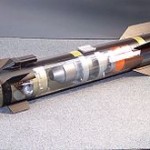
Guest Post: Cyber Theft and Vulnerabilities to the U.S. Defense Industrial Base
By Brig. Gen. John Adams
The United States defense industrial base is a vital part of the U.S. force structure that is increasingly vulnerable and under threat. Not only must U.S. defense industrial firms – including companies of all shapes and sizes in communities across the nation – contend with shrinking and uncertain budgets, but they also face a range of vulnerabilities including extensive cyber intrusion. As the Washington Post recently reported, some of the most advanced U.S. weapons designs have been “compromised” by hackers in China. These systems include the F-35 Joint Strike Fighter, the U.S. Navy’s Aegis Air and Missile Defense system, and U.S. unmanned drone technology. The ability of China and other nations to illicitly obtain this sort of information puts the U.S. global military edge at risk, and potentially gives these countries the ability to undermine or defeat U.S. systems.
 These recent revelations do not constitute an isolated threat to the ability of the United States to design and produce the best military systems in the world. As Guardian Six Consulting recently documented in a report prepared for the Alliance for American Manufacturing, the U.S. defense industrial base faces a wide array of vulnerabilities, largely because many of our most important defense supply chains are no longer sourced domestically. China and other nations now control key supply chains upon which the United States depends to supply U.S. troops. To make matters worse, below the level of the big prime contractors, the United States has very little awareness of which companies (and which countries) supply inputs and subcomponents. This creates the risk of single points of failure deep within U.S. supply chains. For instance, a vital input for HELLFIRE missile propellant is only manufactured by a single Chinese firm. Zero domestic production of this input takes place today.
These recent revelations do not constitute an isolated threat to the ability of the United States to design and produce the best military systems in the world. As Guardian Six Consulting recently documented in a report prepared for the Alliance for American Manufacturing, the U.S. defense industrial base faces a wide array of vulnerabilities, largely because many of our most important defense supply chains are no longer sourced domestically. China and other nations now control key supply chains upon which the United States depends to supply U.S. troops. To make matters worse, below the level of the big prime contractors, the United States has very little awareness of which companies (and which countries) supply inputs and subcomponents. This creates the risk of single points of failure deep within U.S. supply chains. For instance, a vital input for HELLFIRE missile propellant is only manufactured by a single Chinese firm. Zero domestic production of this input takes place today.
Efforts to preserve and strengthen the U.S. defense industrial base are already underway, including the Defense Department’s “Sector-by- Sector, Tier-by-Tier” (S2T2) approach, but more must be done. It is not enough for the U.S. military to be ready now in the current global security environment. We must be ready to fight on the future battlefield in circumstances that will likely be very different. We must ensure a strong, flexible, and secure U.S. defense industrial base.
Sector, Tier-by-Tier” (S2T2) approach, but more must be done. It is not enough for the U.S. military to be ready now in the current global security environment. We must be ready to fight on the future battlefield in circumstances that will likely be very different. We must ensure a strong, flexible, and secure U.S. defense industrial base.
Brig. Gen. John Adams is President of Guardian Six Consulting, LLC and is a member of the Consensus for American Security






